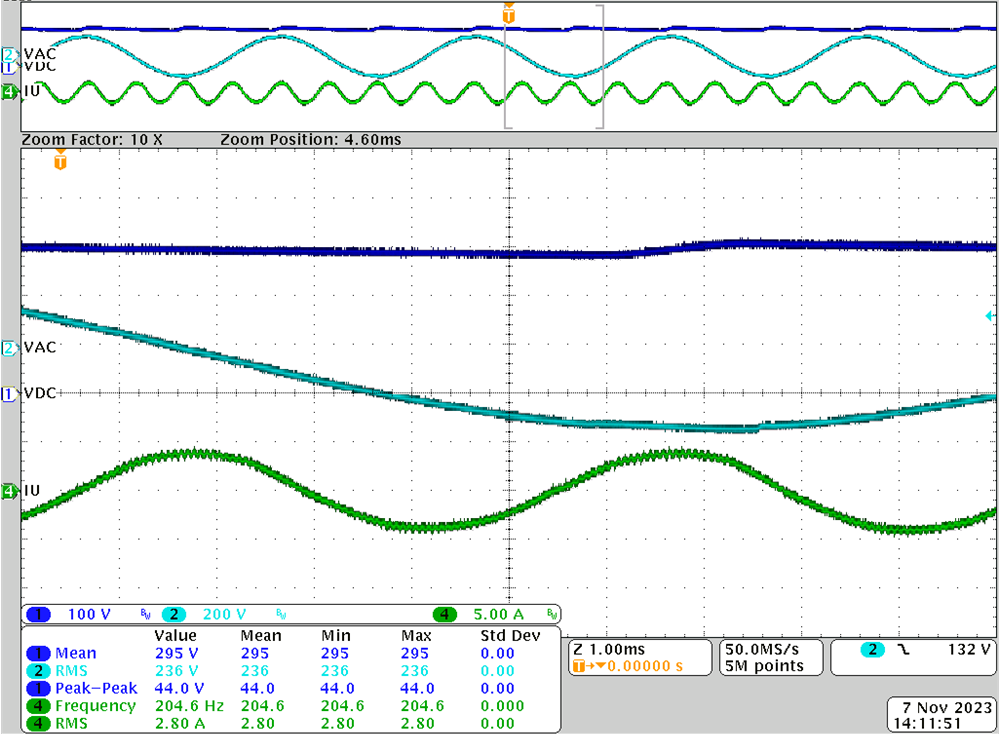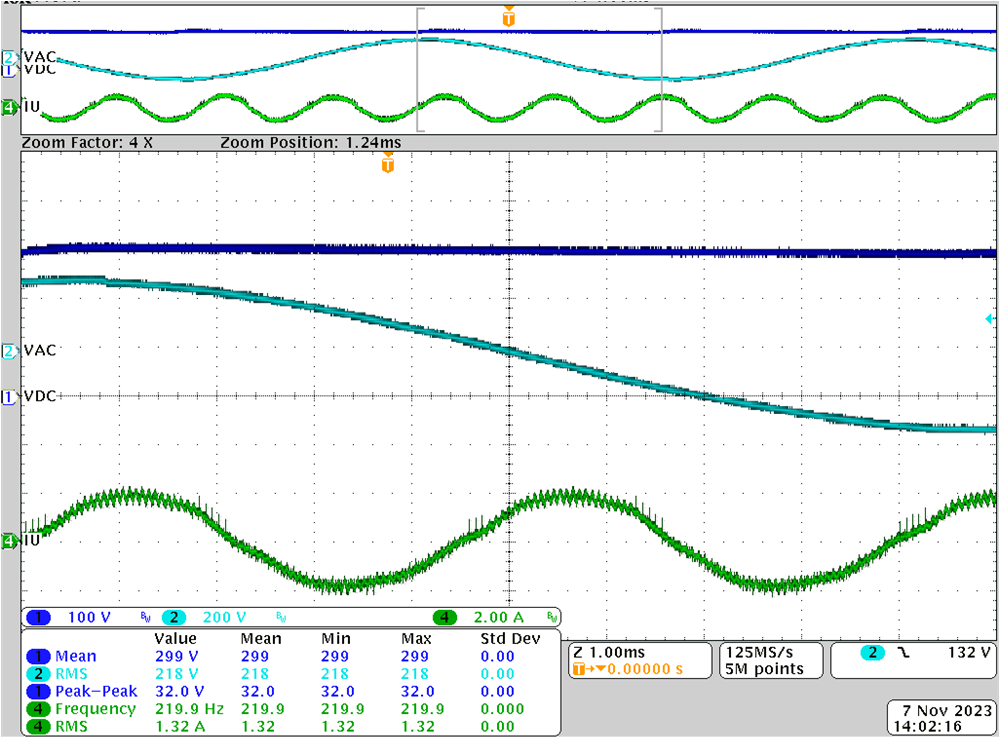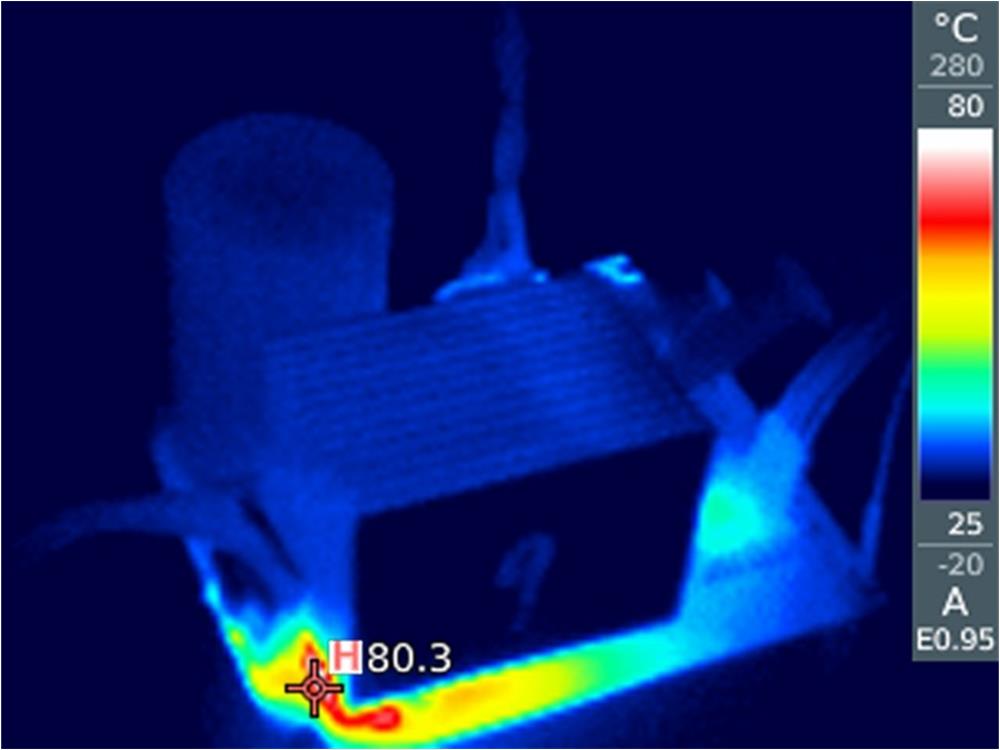SPRUJF4 October 2024
- 1
- Description
- Features
- Applications
- 5
- 1Evaluation Module Overview
- 2Hardware
- 3Motor Control Software
-
4Test Procedure and Results
- 4.1 Build Level 1: CPU and Board Setup
- 4.2 Build Level 2: Open-Loop Check With ADC Feedback
- 4.3 Build Level 3: Closed Current Loop Check
- 4.4 Build Level 4: Full Motor Drive Control
- 4.5 Test Procedure
- 4.6 Performance Data and Results
- 5Hardware Design Files
- 6Additional Information
- 7References
4.6.1 Load and Thermal Test
Figure 4-16 is a waveform at 3000 RPM (200 Hz) under 500-W dyno load. The waveform includes the following display:
- CH1 (Blue): DCBUS voltage
- CH2 (Light Blue): AC Input Voltage
- CH4 (Green): Current of phase U
 Figure 4-16 Phase Current and Voltage Waveforms of Motor at 500 W, 200 Hz
Figure 4-16 Phase Current and Voltage Waveforms of Motor at 500 W, 200 HzFigure 4-17 shows a waveform at 3300 RPM (220 Hz) under 300-W dyno load with field weakening enabled. The motor tested is rated at 3000 RPM (200 Hz) and now works at field-weakening status.
- CH1 (Blue): DCBUS voltage
- CH2 (Light Blue): AC Input Voltage
- CH4 (Green): Current of phase U
 Figure 4-17 Field Weakening Test at 300 W, 220 Hz
Figure 4-17 Field Weakening Test at 300 W, 220 HzThis board is designed to work at 750 W for a short amount of time (≤ 1 minute), pay attention to rising temperatures. If running the board at high power or for a long time, use an external cooling fan to cool down the heat sink. Figure 4-18 shows the board temperature rising at 500 W, 3000 RPM (200 Hz).
 Figure 4-18 Thermal Test Under 220 VAC, 500 W, 200 Hz
Figure 4-18 Thermal Test Under 220 VAC, 500 W, 200 Hz